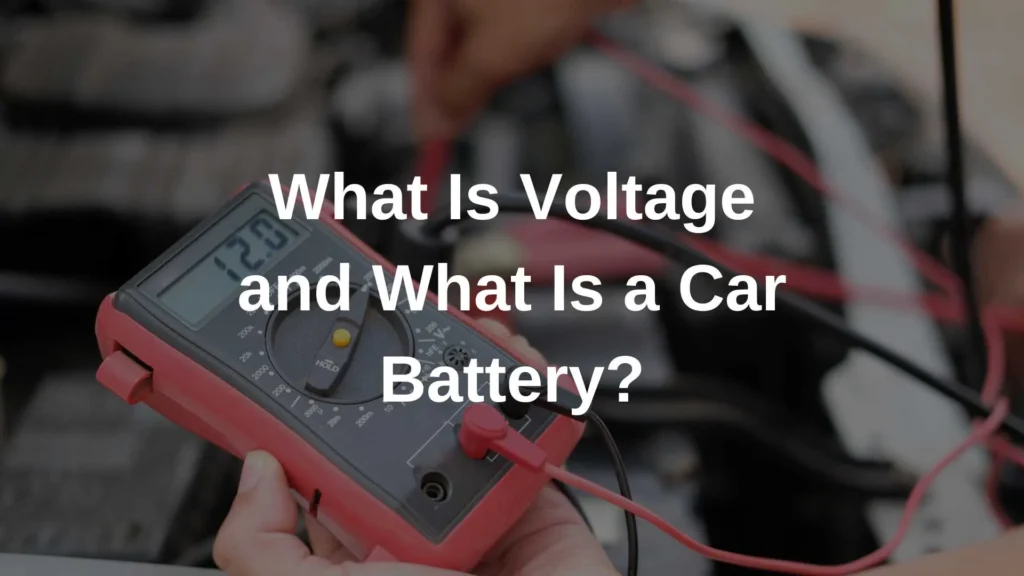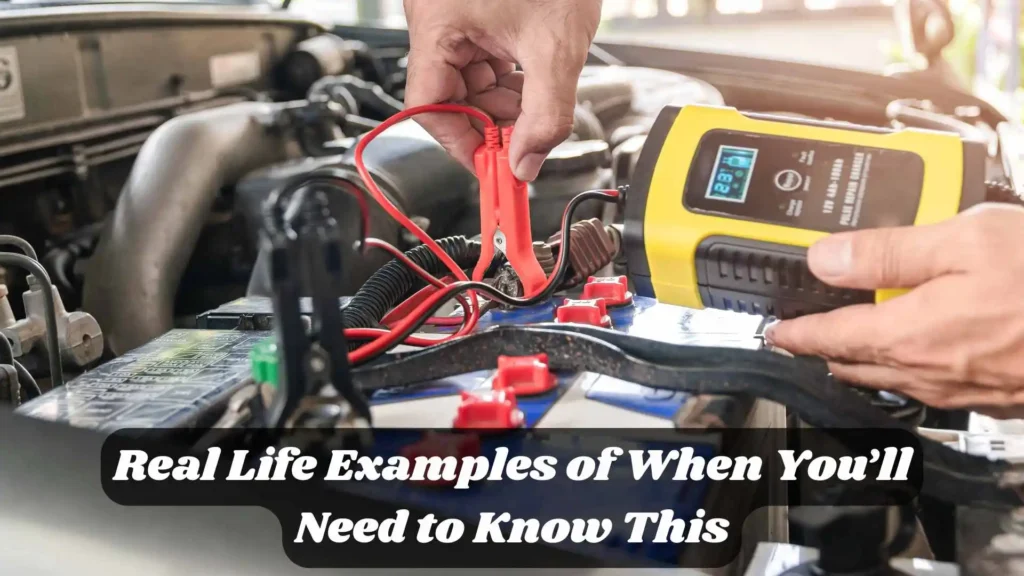Have you ever turned your car key only to hear a weak click—or nothing at all—and wondered, how many volts are in a car battery anyway?
You’re not alone. It’s one of the most common questions drivers ask when they start noticing sluggish starts, dim lights, or strange electrical issues.
Understanding your car battery’s voltage isn’t just for mechanics—it’s something every driver can benefit from.
In this article, you’ll learn what the normal voltage range is, how to check it yourself, and what those readings actually mean for your vehicle’s health.
Whether you’re curious or troubleshooting a problem, you’re in the right place.
Let’s find out exactly how much power your car battery should really have!
🔋 Understanding the Basics | What Is Voltage and What Is a Car Battery?

Before diving into numbers, let’s first understand what we’re comparing here — the unit (volt) and the object (car battery).
What Is a Volt?
- A volt (V) is a unit of electric potential.
- In simple terms, it measures how strong the electrical “push” is in a circuit.
- Think of voltage like water pressure in a pipe — the higher it is, the stronger the flow.
What Is a Car Battery?
- A car battery is a rechargeable power source that provides the electricity your car needs to start and run.
- It stores energy in chemical form and converts it to electrical energy when required.
- Most modern cars use lead-acid batteries designed to deliver short bursts of high power.
⚙️ The Direct Answer | How Many Volts Are in a Car Battery?
- A fully charged standard car battery has 12.6 volts (when the engine is off).
- When the engine is running, the voltage rises to 13.7 to 14.7 volts due to the alternator charging the battery.
👉 Quick Answer:
| Condition | Typical Voltage |
| Engine Off | 12.6 volts |
| Engine Running | 13.7 – 14.7 volts |
| Low Battery | Below 12.0 volts |
| Dead Battery | 11.9 volts or less |
📊 Car Battery Voltage Chart
| Battery Status | Voltage Reading | Condition |
| 12.6V – 12.8V | Fully charged | Excellent condition |
| 12.4V – 12.5V | 75% charged | Good, may need charging soon |
| 12.2V – 12.3V | 50% charged | Needs charging |
| 12.0V – 12.1V | 25% charged | Weak battery |
| 11.8V or less | Discharged | Replace or recharge immediately |
🚗 Why Car Battery Voltage Matters in Real Life

Just like using the wrong measuring cup can ruin a recipe, having the wrong voltage can cause major issues for your car.
Here’s why it’s important:
- Engine Start Failure: Low voltage means your car may not start.
- Dim Lights: Headlights and dashboard lights appear weaker.
- Electrical System Damage: Too high or too low voltage can harm sensitive electronics.
- Battery Lifespan: Proper voltage helps extend the life of your car battery.
Knowing your battery’s voltage helps you spot problems early and avoid costly repairs.
🧠 Easy Way to Remember Car Battery Voltage
Think of it like a 12-pack of soda:
- Each can (cell) holds about 2 volts.
- Put 6 cans together (6 cells), and you get 12 volts — that’s your car battery!
Mnemonic Trick:
“Six cells, two volts each — twelve volts that keep your car in reach.”
⚠️ Common Mistakes and Tips for Accurate Voltage Reading
Mistakes to Avoid:
- Measuring right after driving (voltage can be higher due to charging).
- Forgetting to turn off headlights or accessories before checking.
- Using a low-quality voltmeter or not calibrating it.
Tips for Accurate Reading:
- Let the car sit for at least 30 minutes before testing.
- Use a digital multimeter for best accuracy.
- Always test both engine-off and engine-on voltage.
⚖️ Is There a Difference Between Car Battery Types?
Yes! Not all car batteries have the same voltage characteristics:
| Battery Type | Nominal Voltage | Notes |
| Lead-Acid (Standard) | 12.6V | Most common in vehicles |
| AGM (Absorbent Glass Mat) | 12.8V | More efficient, longer life |
| Lithium-Ion | 13.2V | Found in modern electric or hybrid vehicles |
| Deep Cycle | 12.7V | Used in RVs, boats, or golf carts |
So while 12 volts is the standard reference, exact readings can vary slightly by battery type.
🧩 Real Life Examples of When You’ll Need to Know This

- When your car won’t start: Check voltage before replacing parts.
- During battery replacement: To ensure compatibility with your vehicle.
- In cold weather: Monitor voltage as cold reduces battery capacity.
- If installing accessories: Like dash cams or amplifiers that draw extra power.
- Before long trips: Prevent breakdowns by checking battery health.
❓ Frequently Asked Questions (FAQ)
1. What should a car battery read when fully charged?
A fully charged battery should read 12.6 to 12.8 volts when the engine is off.
2. Is 12 volts enough to start a car?
No — 12.0 volts is borderline low. Ideally, your battery should be at least 12.4 volts to start the car reliably.
3. What voltage is considered too low for a car battery?
Anything below 12.0 volts indicates your battery is weak or discharged.
4. Can a car battery have too much voltage?
Yes. If it’s over 15 volts, the alternator may be overcharging it — which can damage the battery.
5. How often should I test my car battery voltage?
At least once a month, or before long trips.
6. Can I use a multimeter to check my car battery?
Absolutely! A digital multimeter is the easiest and most accurate way to measure voltage at home.
🏁 Conclusion
Understanding how many volts are in a car battery helps you take better care of your vehicle, just like knowing proper measurements helps you master a recipe. A healthy battery means reliable starts, bright lights, and peace of mind every time you turn the key.
Keep your battery charged, check it regularly, and remember — 12.6 volts is your golden number!

Richard Ward is a versatile author known for weaving stories that blend emotion, depth, and a touch of mystery. His writing captures the beauty of ordinary moments while exploring the complexities of human connection.
He has written several acclaimed works, including Whispers of the Fallen Star, Dreams Carved in Stone, and The Horizon We Leave Behind. Each of these books reflects his unique voice and ability to turn simple ideas into unforgettable journeys.
Away from the page, Richard enjoys exploring art, history, and quiet evenings that spark his creativity. His stories continue to inspire readers who seek both reflection and wonder in literature.


